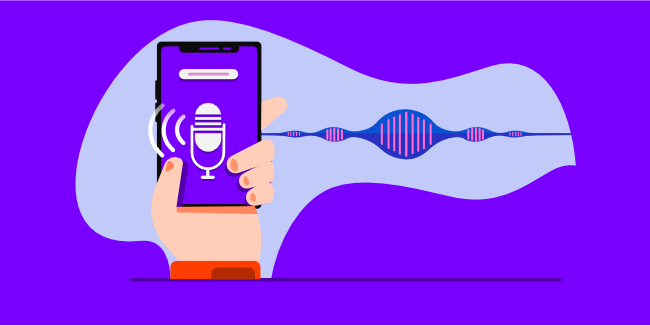Audio Branding: A Guide to Brand Recognition
Why Sound Is Central to Brand Recognition
When people talk about brand recognition, they usually start with visuals. Logos, color palettes, typography, packaging, and design systems are seen as the foundation of identity. But recognition is not only visual. It is multi-sensory, and one of the most powerful and overlooked tools for creating recognition is sound.

The human brain processes sound faster than visuals, and audio cues are tied directly to memory and emotion. A familiar sound can instantly trigger associations that visuals alone cannot achieve. The short chime that plays when you open a laptop, the few notes that signal the start of a commercial, or the melody you hear on hold with customer service all embed themselves into memory. This is the essence of audio branding, and it is one of the strongest drivers of brand recognition in the modern marketplace.
What Is Audio Branding
Audio branding, also referred to as sonic branding or sound identity, is the intentional use of sound to define and reinforce a brand. Just as a visual logo provides an instant reference point, a sonic identity communicates personality, values, and distinctiveness through audio.
Forms of audio branding include:
- Sonic logos (short, memorable sound signatures)
- Branded music or jingles
- Product and interface sounds
- Brand voice and narration styles
- Curated soundscapes in physical or digital environments
At its core, audio branding is about designing sound with the same precision and strategy that brands apply to visual identity. Consistency is key. When a customer hears the same sound at multiple touchpoints, recognition builds and loyalty strengthens.
The Link Between Sound and Memory
The connection between audio branding and recognition is rooted in psychology and neuroscience. Studies show that humans are capable of recognizing and recalling sound patterns with remarkable accuracy.

Unlike visuals, which require conscious processing, sound often bypasses rational thought and connects directly with emotional centers in the brain.
For brands, this means a sonic identity can:
- Build faster recognition than visual logos alone
- Create emotional responses that enhance loyalty
- Improve recall in crowded markets
- Strengthen multi-sensory brand experiences
Think of the way the sound of a soda can opening instantly brings to mind refreshment, or how a smartphone’s notification tone signals not just a message but the brand itself. These associations are sticky because they operate at both a conscious and subconscious level.
Brands That Mastered Audio Recognition
Intel
The five-note Intel sound is among the most famous sonic identities ever created. It is short, simple, and globally recognized. The sound communicates innovation and reliability in a way that transcends language.
Netflix
Netflix’s startup sound is a perfect example of how audio branding creates anticipation. The quick, resonant “ta-dum” primes viewers for the entertainment experience that follows. It is not just a sound, it is a signal of what comes next.
McDonald’s
The “I’m Lovin’ It” melody has become inseparable from the brand. It works in multiple languages and contexts, proving the universal power of music to drive recognition.
Apple
From the Mac startup chime to the distinct click of AirPods snapping into place, Apple has built a product ecosystem where sound design plays as important a role as aesthetics. Each sound reinforces premium quality and user experience.
Mastercard
Mastercard’s investment in a global sonic identity is a case study in strategic audio branding. The company created a sound that could adapt across cultures while remaining recognizable. Today it plays in commercials, retail experiences, and digital interactions, reinforcing the brand consistently.
How to Build an Effective Audio Branding Strategy
Define Brand Personality Through Sound
The first step is to translate brand values into sonic characteristics. A luxury brand might focus on rich, layered tones. A playful consumer brand might lean into bright, energetic melodies. Sound must reflect personality.
Keep It Simple and Distinctive
The most effective audio identities are short and memorable. Complexity rarely sticks. A handful of notes, a crisp chime, or a short melodic phrase is more likely to achieve long-term recognition.
Ensure Consistency Across Channels
An audio brand should appear wherever customers interact. Digital ads, podcasts, app notifications, retail spaces, and even employee training materials are opportunities to reinforce sonic identity. Consistency builds recognition.
Integrate Sound Into the Product Experience
Some of the most successful audio branding strategies are built directly into the product. From the sound of a car starting to the confirmation tone of a payment app, functional sounds can be designed to carry identity.
Test Emotional Resonance
Audio branding must be tested with real audiences. A sound that is memorable but evokes the wrong emotion can damage recognition rather than help it. Research and testing ensure alignment between intention and perception.
Refresh Without Losing Recognition
Just as logos evolve, sonic identities can be updated. The key is to modernize while preserving recognizable elements. Brands that adapt over time without abandoning their core sounds maintain relevance without losing recognition.

Common Mistakes in Audio Branding
Not all sonic branding is successful. Some common mistakes include:
- Overcomplication: Too many notes or elements dilute memorability.
- Inconsistency: Using different sounds across campaigns confuses recognition.
- Copying competitors: A sound that is too similar to another brand weakens identity.
- Ignoring context: A sound that works in one environment may feel intrusive or inappropriate in another.
Avoiding these pitfalls ensures that audio branding strengthens recognition instead of creating noise.
The Future of Audio Branding in a Digital World
The rise of voice assistants, podcasts, immersive technologies, and spatial audio has elevated the role of sound in brand recognition. In voice-first environments, visual cues are absent. Sound becomes the primary way brands establish presence.
In gaming, AR, VR, and metaverse platforms, sound is integral to immersion. Brands that invest in sonic strategies now will be better positioned to engage audiences in these environments.
Even in traditional advertising, the shift to mobile-first experiences has made audio more valuable. Many consumers scroll without looking at visuals but still hear the sound of a video or ad. A strong sonic logo or jingle can capture attention even without imagery.
Why Audio Branding Strengthens Brand Recognition
Sound is fast, emotional, and memorable. In an era where attention spans are short and competition is constant, audio branding gives companies an edge. It helps brands stand out, builds familiarity, and creates emotional bonds that last.
Investing in audio branding is not a trend. It is an essential part of building recognition across every channel where customers encounter your brand.
CMoore Sound specializes in creating sonic identities that resonate. Our work helps brands design sound that is consistent, memorable, and impactful. If you are ready to strengthen your brand recognition through audio, contact our team and make your brand heard.